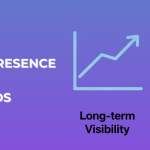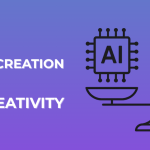Table Of Content
- 1 What Is Content Writing Checklist?
- 1.1 Does Your Content Match The Search Intent?
- 1.2 How Well Does Your Content Align With Your Goals?
- 1.3 Have You Produced Sharable Content?
- 1.4 Topic Coverage: Address Everything There Is To Know About The Topic
- 1.5 Is Your Focus Keyword Right?
- 1.6 Is The Length Correct? Long-form Or Short-form?
- 1.7 Readability – Is It Easy To Scan For Information?
- 1.8 Have You Added Keywords To Your Title And Headers?
- 1.9 Have You Optimized Your Anchor Text?
- 1.10 Long-Tail Keyword For The More Targeted Audience
- 1.11 What About The Content Flow? Is The Content Easy To Navigate For The Reader?
- 1.12 Has Your Content Been Fact-Checked?
- 1.13 Where Do You Get Your Information? What Is Their Credibility?
- 1.14 How Current Is Your Information?
- 1.15 Ensure Fail-Proof Internal Linking Structure
- 1.16 Don’t Optimize Your Content Solely Based On A Plugin
- 1.17 Were You Able To Outperform Your Competitors With The Content?
- 1.18 Quality And Quantity Of Calls-To-Action
- 2 And That’s A Wrap!
Content is king, no doubt. But when it’s SEO-friendly content, it builds a kingdom.
Even in 2025, both SEO and content continue to be the key pillars of online marketing. They are taking your brand to households across the world and turning a digital wanderer into a buyer.
So, it’s time to dive into SEO writing because when it is done correctly, it can do wonders for your business and the brand. But how? Well, that’s what we will explore in this article, along with a curated content writing checklist that will guide you to draft the best SEO-friendly content.
Let’s start.
Importance Of SEO-friendly Web Content
Before moving on to the content writing checklist, let’s first understand why you need to focus on SEO-optimized content. Here are your reasons –
Improves brand visibility
When you write content that incorporates SEO best practices, it starts ranking high on the SERP. As a result, it becomes easier to find your brand against certain keywords and phrases, which increases the visibility.
Builds brand trust and credibility
When your content ranks consistently high on the SERP ranking, it establishes your brand as a credible source of information. Thus, it builds trust in the business.
Drives organic traffic
When the SEO-optimized content starts ranking higher in the SERP, it builds more traffic to your site. It attracts people who are actively looking for the products and services that your company is offering.
Increases conversion
The SEO-friendly content brings targeted traffic to the site, and then relevant and high-quality content keeps them engaged. Together, these two increase the chances of conversion, thereby driving the revenue.
Read more: Importance of content writing in SEO
What Is Content Writing Checklist?

Content is a critical part of SEO, no doubt. But writing the perfect piece of content is nothing short of a challenge.
However, a good thing about challenges is that they are here to be overcome.
And, on this journey, you need a content checklist. A curated set of pointers that you can go through before hitting the ‘publish’ button to assess the quality and purpose of the content.
Consider it your secret weapon for conquering the vast digital world.
With A Content Writing Checklist, You Can Confidently Address Crucial Elements Like:
- Keyword optimization.
- Readability.
- Structure.
- Relevance.
And, when you do that, you ensure the content is SEO-compliant, offers superior reading experience and it is high-quality.
You May Like To Know About High-Quality Content For Guest Posts
Content Writing Checklist: 20 Pointers
Now we will be going to reveal an SEO Content Writing Checklist. There are 20 actionable insights covered in this list. Let’s explore!
Does Your Content Match The Search Intent?

When someone types a query into a search engine, your content should provide an answer or solution to it.
To achieve this, start by understanding the different types of search intent. But what is it? Well, search intent is simply the user’s intention behind looking up something on the internet.
Here are some examples –
- Are users looking for informational content, such as guides or tutorials?
- Do they want to make a purchase, indicating commercial intent?
- Or are they seeking specific websites or brand information reflecting navigational intent?
Once you’ve identified the search intent, then tailor your content accordingly.
Now, to match the search intent, you can do the following:
- You can craft compelling headlines, introductions, and subheadings directly addressing the user’s needs.
- To meet their search intent, provide valuable information, actionable tips, and engaging examples.
- Provide comprehensive, well-structured, and easy-to-navigate content.
How Well Does Your Content Align With Your Goals?

Next on the checklist – What is your goal?
Is it to educate, entertain, or persuade?
If you know your goal, it makes creating content that more easier.
Next, think about your target audience. Are you targeting tech-savvy millennials or seasoned professionals? Speak their language, address their pain points, and provide solutions they’ll find effective.
Now, let’s dive into the nitty-gritty of your content.
Do you have an attention-grabbing headline? Is your introduction engaging right from the start? Your first impression only lasts a few seconds. Put your best foot forward!
Have You Produced Sharable Content?

What’s the point of creating content that people don’t talk about. So, your next step is to make easy to consume content, one that has the potential to become a sensation.
Use headings, bullet points, and visuals to make it appealing and easily scannable. Remember, people are short of patience on the internet, so create content that is easy to digest.
There is an added benefit of this – It lowers the website’s bounce rate.
Also, don’t forget to add a dash of personality. Adding your own voice or humor can make your content more memorable and relatable.
People love sharing content that connects with them.
Topic Coverage: Address Everything There Is To Know About The Topic

When you cover the topic comprehensively, you become a go-to resource for readers in that niche.
By demonstrating your knowledge, you’ll not only impress people but also search engines. Writing valuable, thorough content makes you more likely to rank higher in search results.
So, How Can You Ensure Your Content Covers All The Bases?
- Do your research.
- Analyze the blog ranking on the first page for that particular keyword.
- Identify the aspects that they haven’t touched yet.
- Add all points covered by the articles ranking on the first page. Make sure your content doesn’t require them to go anywhere. Your content should cover all aspects.
Is Your Focus Keyword Right?

Focus Keywords are like your content’s guiding star. You aim to rank for this phrase or search term in search engine results.
Imagine it like a secret password search engines use to figure out what you’re writing about. You need to pick the right focus keyword to reach the right audience.
But, how to figure out whether the keyword you have chosen is the right one, or not?
For that, you need to check if the keyword is accurately conveying the content’s main theme. Then, will people actually look it up?
Put yourself in their shoes and think, you will find the answer.
Now, this is not measurable; you can’t make a decision based on your feelings. So, technically, you should choose focus keywords that have a high search volume and low competition.
Now, this is not the only problem. Is your search term too broad, or is it too specific? In that case, finding a sweet spot is the key.
Is The Length Correct? Long-form Or Short-form?

If you need a quick answer to a question or a simple solution to a problem, you don’t want to scroll through pages of text. Right?
You want the information to be presented – clearly and concisely. A shorter piece that gets straight to the point will suffice in such cases.
On the other hand, if you are looking for a detailed guide on a product or service, or a how-to content, then you need a thorough description, which is well-researched.
So, there is no hard and fast rule for the length of the content. It primarily depends on the scope of the topic. Think about your content’s purpose, the topic, and your target audience’s needs. Embrace the longer format if it requires a thorough dive into a complex subject.
The key here is to strike a correct balance.
Readability – Is It Easy To Scan For Information?

Day by day, people’s attention spans are decreasing. Today, most people don’t have the time or patience to read every word on a webpage. They aim to find what they need as quickly and as efficiently as possible. Therefore, your content must be easy to scan.
Now, what are the best ways to achieve this?
First, you write shorter sentences.
Then, break the content into ‘bite-sized’ small paragraphs. It makes your readers’ lives easier and lets them consume it more easily.
Another helpful technique is to utilize subheadings. These act as signposts, guiding your readers through the different sections of your content. Additionally, using subheadings makes your content more visually appealing and easier to scan.
You want to do more? Then you can use bullet points and numbered lists and further improve the readability of the content. They not only make it easier for the reader to understand the content but also help it appear in Google’s featured snippet – it drives traffic and engagement.
Moreover, using images, graphs, or infographics can break up the text and provide visual cues that help readers navigate your content. Visuals can also enhance understanding and make complex concepts more accessible.
Have You Added Keywords To Your Title And Headers?

Think of titles as the first impression of your content. So, it’s important that they’re catchy, informative, and optimized.
Headers, on the other hand, are like signposts within your content. They break down your article into digestible chunks and make navigating easier for readers.
But, to make them SEO-friendly, you need to add the relevant search queries or keywords in them. Reason? They will appear in search results and grab readers’ attention.
Have You Optimized Your Anchor Text?

Search engines and readers both benefit from optimizing anchor text. But how do you do that? In just three simple steps:
- Be descriptive. Avoid generic phrases like “click here” or “read more.” Instead, use relevant keywords. Your anchor text could be something like “Check out these amazing hiking trails” if you’re linking to an article about hiking trails.
- Secondly, keep it natural. Make sure your anchor text blends seamlessly with the surrounding text. It shouldn’t stand out. Your content should flow naturally.
- Make sure your anchor text is diverse. Whenever you create a hyperlink, don’t use the same keyword. To create an engaging linking profile, use variations of your target keywords.
Long-Tail Keyword For The More Targeted Audience

Next on the content writing checklist: Using long-tail keyword for targeting a broader audience
How do you find the perfect long-tail keyword? You need to understand your audience and do some keyword research. Consider your potential customer’s perspective.
How might they search for your product or service? What terms or phrases might they use? You can leverage any tool to achieve the same.
You’ve found your long-tail keyword; now it’s time to weave it into your content. Sprinkle these keywords organically throughout your blog post or article with a keyword density of 1-2%.
But make sure your writing remains natural and provides readers with value.

Your content’s flow plays an important role here. You want your readers to move smoothly from one sentence to another, from one paragraph to another. Engage, immerse, and keep them wanting more.
What is the secret to achieving this magical flow? We’ve got you covered with our content writing checklist. To begin with, organize and logically structure your content.
Set the stage for what’s to come with an engaging introduction. Then, smoothly transition between sections and ideas, guiding your readers along the narrative.
Your choice of words also plays a vital role. Write clear and concise sentences that convey your message effectively. Connect ideas seamlessly by using transitional words and phrases. Building bridges between sentences leads your readers to the next captivating thought effortlessly.
Meta Tags Must Be Optimized
A meta tag comprises two components: a meta title and a meta description.
Write a meta description that summarizes your content on search engine results pages. When you craft it strategically, these tags can:
- Attract more clicks.
- Increase organic traffic.
- Improve search engine rankings.
Meta tags should be enticing and informative for users and satisfying to search engines. You’re creating mini sales pitches for each page of your website.
Has Your Content Been Fact-Checked?

We hope that this content writing checklist is going well so far.
If it is, then fact-checking is next on our list.
Content that is accurate and reliable is in high demand. That’s where fact-checking comes in.
Here, you work like a detective, digging deep to uncover the truth and supporting your statements.
You might wonder, “How do I go about fact-checking my content?”
Here is How:
- Double-check your statistics.
- Verifying sources to scrutinize quotes and cross-referencing information.
Where Do You Get Your Information? What Is Their Credibility?

If you want a sustainable SEO strategy, it is important that you build credibility. This is where accurate and reliable information comes into play.
So, how do you determine if a source is credible?
Here are a few handy tips from our content writing checklist:
Evaluate whether it is a reputable website, a renowned publication, or an expert in the field? Look for established sources with a track record of delivering accurate and trustworthy information.
Also, verify the expertise of the author! Is he/she qualified, experienced, or certified to speak on the topic? There is often a knowledgeable expert behind a credible source.
Now, cross-check the information with other reliable sources. If multiple sources support the claims, it adds credibility to your own content.
Lastly, biases are inevitable because you are a human being. But what’s important is whether you are aware of that bias or not. If you are, then try and present a balanced perspective to your audience and strive for objectivity.
How Current Is Your Information?

Have you ever read an article or blog post that was outdated and irrelevant? It’s a major disappointment.
Well, you don’t want to disappoint your readers. Right? Because they will disappoint you and Google Analytics will reflect that.
Therefore, keeping your content fresh and updated is crucial in an online world that evolves faster than you can say “search algorithm.” You know the reason, as your readers get accurate and current information, they will spend more time on your site and search engines know your content is trustworthy and relevant, which will help it rank higher on SERP.
So, before incorporating any information (especially data or statistics) in your content piece, ensure they are the most recent.
Ensure Fail-Proof Internal Linking Structure

Here’s a clever trick: Search engines love it when you strategically link to other relevant content on your website. Your audience will look at all the amazing content and say – “Wow, these people really know their stuff!” It’s like showing off our knowledge and expertise.
As people explore and stay longer, they are more likely to become loyal customers and fans. As simple as it may sound.
However, you must be cautious and not go overboard with this strategy. It’s crucial to only link to content that genuinely aligns with the topic at hand.
Some people go crazy and start linking to totally unrelated piece of content. This is something that you must refrain from.
Don’t Optimize Your Content Solely Based On A Plugin

There is no doubt that plugins can be handy!
They provide helpful suggestions, keyword analysis, and even readability scores. However, here’s the reality check: plugins are not the be-all and end-all of SEO.
Plugins are designed to be general and cater to various websites and industries. So, they can’t fully understand the nuances of your content, your target audience, or your specific goals.
While these plugins are great to start your content creation journey, solely relying on them will lead to generic, cookie-cutter content.
Therefore, to optimize your content, you need a human touch—a skilled content writer who understands your brand, audience, and objectives. Someone who can create engaging, informative, and well-structured content that resonates with your readers.
A plugin can’t do that.
Were You Able To Outperform Your Competitors With The Content?

We are at the second last part section of this content writing checklist. Tell us, how’s it been so far? You can find us across all the social channels, feel free to drop a comment.
It’s time to compare your content with your competitors.
Are you able to outrank your competitors with your content? Is it able to captivate and keep your audience engaged?
Here Is How You Can Gauge the Effectiveness of Your Content:
- Figure out content gaps. Is there anything that your competitor has covered but you haven’t?
- Have you missed any keywords?
- Have your competitors taken any new perspective or any fresh angle that you haven’t?
- Were you able to meet the search intent the way your competitor do?
Once you pay attention to the questions, you can provide more value to your audience.
Quality And Quantity Of Calls-To-Action

When you invest time and energy into creating engaging content but not leveraging it for conversions would be a missed opportunity. That’s where CTAs come in.
CTAs tell your readers what they should do next. Without CTA, your content might leave visitors wandering aimlessly, unsure of what steps to take.
But here’s the catch: the mere presence of a CTA isn’t enough.
You need to ensure its quality too. You should craft a CTA that is clear, compelling, and attention-grabbing.
Readers should be motivated to click, sign up, or purchase by creating a sense of urgency or offering an irresistible benefit.
And That’s A Wrap!
We hope that this SEO content writing checklist has proved to be handy.
Make sure you incorporate these tips into your practice. Next time you write SEO content, tick all the boxes.
Does it sound easy to you? Do you feel intimidated that you have to consider these factors when writing? If yes, then there is a way! If you need assistance, you can turn to a content writing agency.








